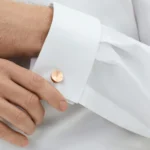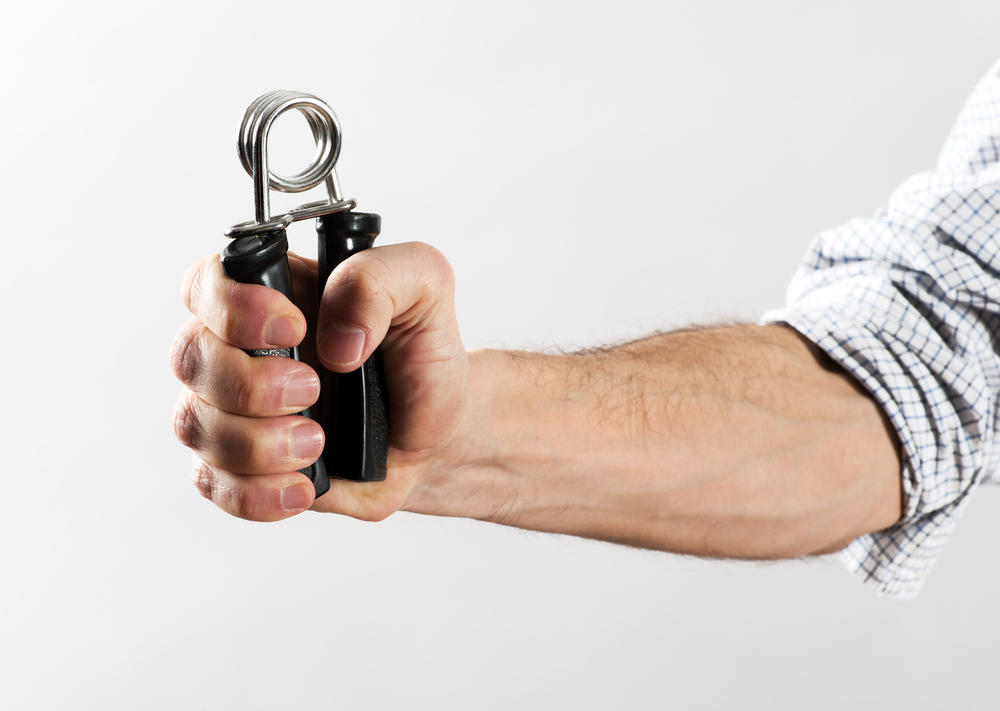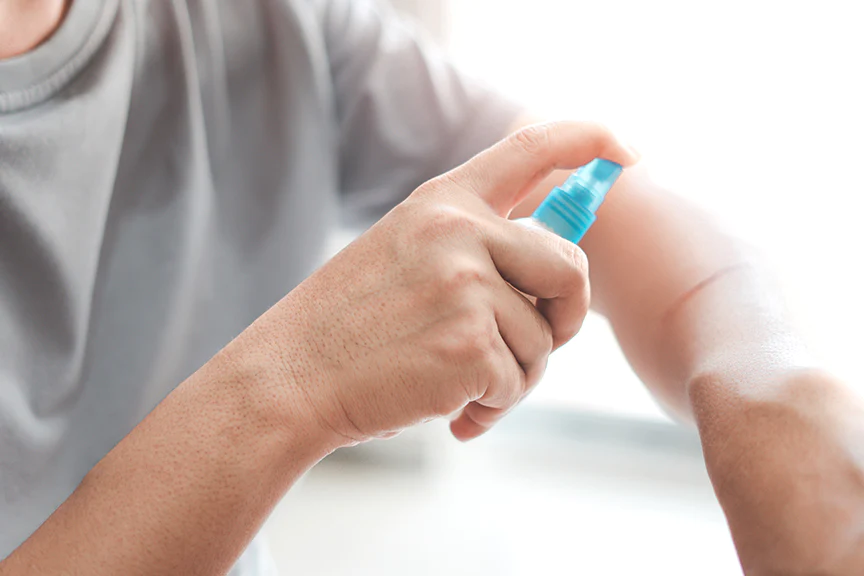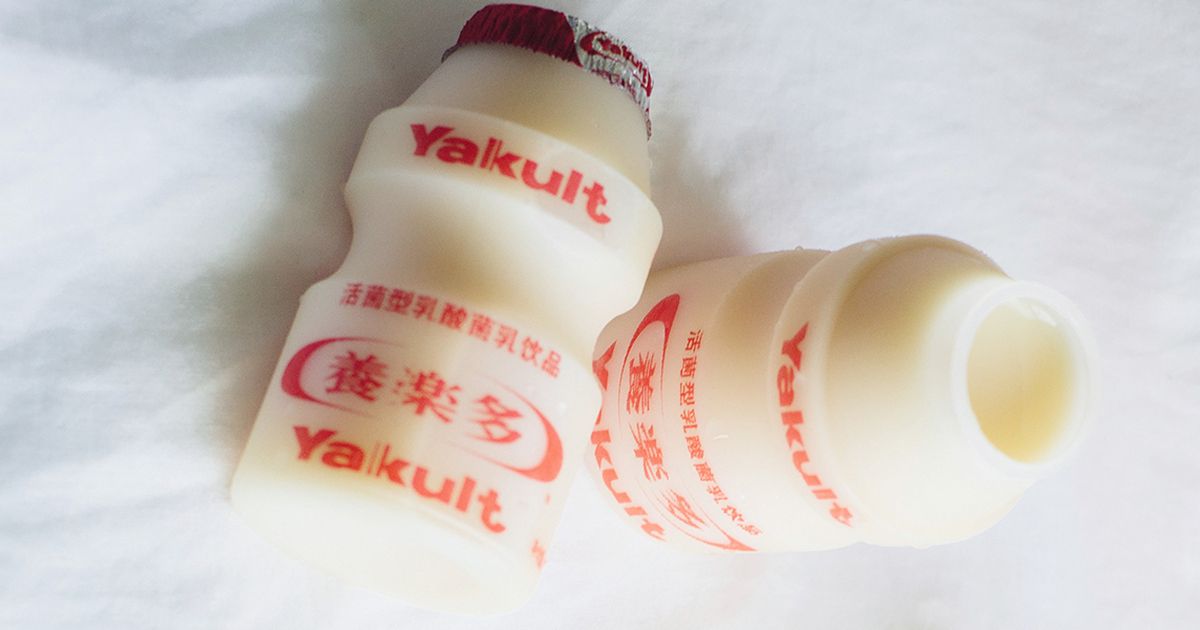I’ve always been interested in fitness and making my body stronger. One thing that’s caught my attention is wrist size. Can using a hand gripper, that small gadget for strengthening your grip, really make your wrists bigger? It’s a question many of us who love fitness have asked.
No, hand grippers do not significantly increase wrist size. Hand grippers primarily target hand and forearm muscles and are not designed to promote substantial wrist size growth. Wrist size is influenced by factors such as genetics and bone structure, and to increase wrist size, exercises that specifically target the wrists would be more effective.
Why Do Hand Grippers Strengthen Hand and Forearm Muscles?
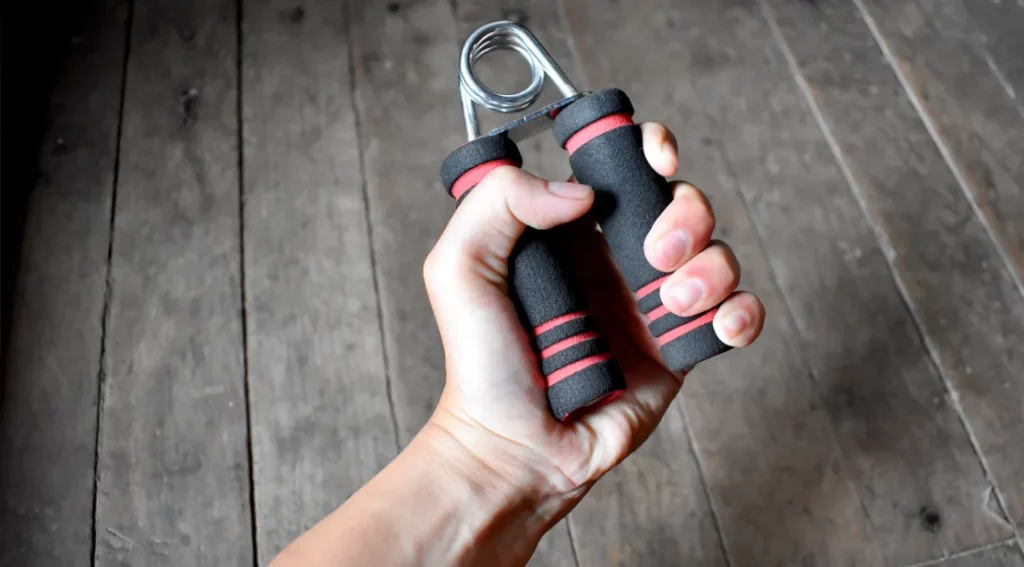
Hand grippers, available in various types, including spring-loaded and torsion spring grippers, are versatile tools that play a crucial role in strength training and rehabilitation programs. These devices are designed to provide resistance through coiled springs or torsion mechanisms, thereby challenging users to squeeze the handles together. For beginners, grippers with lower resistance levels offer a comfortable starting point, allowing for gradual increases in intensity as hand and forearm strength develops.
Additionally, the mechanics behind hand gripper exercises are relatively straightforward. When an individual grips the handles and squeezes, it triggers the engagement of muscles in the fingers, hand, and forearm. These muscles contract to overcome the resistance offered by the gripper’s springs or torsion springs. With consistent use, this repetitive motion leads to a strengthened grip, improved endurance, and enhanced hand and forearm strength.
Although hand grippers are often associated with wrist and forearm development, their benefits extend beyond mere wrist size. These devices are valuable tools for enhancing overall hand strength, which proves advantageous in various activities. Athletes benefit from improved grip strength in sports like rock climbing, weightlifting, and baseball.
Furthermore, everyday tasks such as opening jars or carrying heavy objects become more manageable with a robust grip. Hand grippers are also utilized in rehabilitation settings, aiding individuals in regaining hand and forearm strength after injuries or surgical procedures.
To understand the relationship between hand grippers and wrist size, it’s essential to recognize their broader impact on upper body strength and functionality. While hand grippers contribute to the strengthening of muscles in the hands and forearms, wrist size is influenced by multiple factors, including genetics and bone structure. Therefore, while hand grippers may indirectly support wrist strength and function, they are not specifically designed to significantly increase wrist size on their own.
To summarize, hand grippers are valuable tools for improving hand and forearm strength, grip endurance, and overall upper-body functionality. However, their impact on wrist size is limited, as wrist size is determined by a combination of genetic and structural factors.
Wrist Anatomy and Growth
Wrist Anatomy:
The wrist, often described as a bridge between the hand and forearm, is an intricate joint consisting of multiple small bones, ligaments, tendons, and muscles. The primary bones involved in wrist anatomy include the radius and ulna from the forearm and a collection of eight carpal bones. These carpal bones form two rows, known as the proximal and distal rows, working together to provide both stability and flexibility to the wrist.
Muscles and Tendons:
The muscles responsible for wrist movement and support are primarily located in the forearm. These muscles extend down from the elbow and connect to the hand and wrist through tendons. Key wrist extensors on the back of the forearm help with wrist extension, while flexors on the front facilitate wrist flexion. Additionally, the pronator and supinator muscles allow for rotational movements of the wrist.
Wrist Ligaments:
Wrist stability is maintained by a network of ligaments that connect the carpal bones, forearm bones, and hand bones. These ligaments form a complex web that allows for a wide range of wrist movements while preventing excessive or undesirable motions. Ligaments like the volar radiocarpal and dorsal radiocarpal ligaments contribute to wrist stability during flexion and extension.
Genetics and Wrist Size:
Wrist size, however, is not solely a result of muscle development or exercise. Genetics play a significant role in determining the baseline structure and size of an individual’s wrists. Some people naturally have broader or narrower wrists due to their genetic makeup, and these characteristics are often difficult to change significantly through exercise alone. Genetic factors influence the bone structure and shape of the wrist, making it a unique and personalized aspect of one’s anatomy.
It’s important to note that the primary function of the wrist joint is to provide stability and flexibility to the hand, rather than to support substantial muscle growth. While exercises can indeed strengthen the muscles in the forearm and hand, leading to improved wrist stability and functionality, they may have limited impact on altering the fundamental bone structure that defines wrist size.
What Are the Best Ways to Maximize Hand Gripper Workouts?
Choosing the appropriate hand gripper is a crucial first step. Grippers come in various resistance levels, so it’s essential to begin with one that matches your current strength level. If you’re new to gripper training, opt for a gripper with lower resistance to avoid straining your hand and forearm muscles.
As your strength improves, you can gradually move on to grippers with higher resistance levels. Having a range of grippers at different resistance levels allows you to progressively challenge your grip strength.
To make the most of your hand grippers, it’s advisable to incorporate them into a structured workout routine. Design a regimen that includes specific exercises targeting hand and forearm muscles. Start with warm-up exercises to prepare your muscles for the main workout. A basic routine could include sets of gripper squeezes, both for strengthening finger flexors (closing the gripper) and extensors (opening the gripper). Vary the number of sets and repetitions based on your fitness level and goals.
Furthermore, maintaining proper form and technique is crucial when using hand grippers. Ensure that your grip is centered on the handles, and your fingers wrap around them comfortably. Squeeze the gripper firmly, using a full range of motion. Avoid excessive wrist movement, as the primary focus should be on the muscles in your fingers, hand, and forearm. Engaging in controlled, deliberate movements is more effective than rushing through repetitions.
However, it’s essential to track your progress to see your improvement over time. Keep a workout journal or use a fitness app to record the resistance level, sets, and repetitions for each session. Regularly reassess your grip strength to see how you’re advancing. Setting realistic goals can also be motivating.
Whether your aim is to increase the number of reps, move up to a higher resistance gripper, or enhance overall hand strength, having specific objectives will help you stay focused on your fitness journey.
Lastly, don’t overlook the importance of recovery and consistency. Allow your hand and forearm muscles to rest between sessions to prevent overuse injuries. appropriate rest, proper nutrition, and staying hydrated are all crucial components of recovery. Consistency in your training routine is key to seeing long-term gains. Aim for regular, consistent workouts rather than sporadic, intense sessions.
Are there any negative impacts using of hand grips to strengthen my forearms?
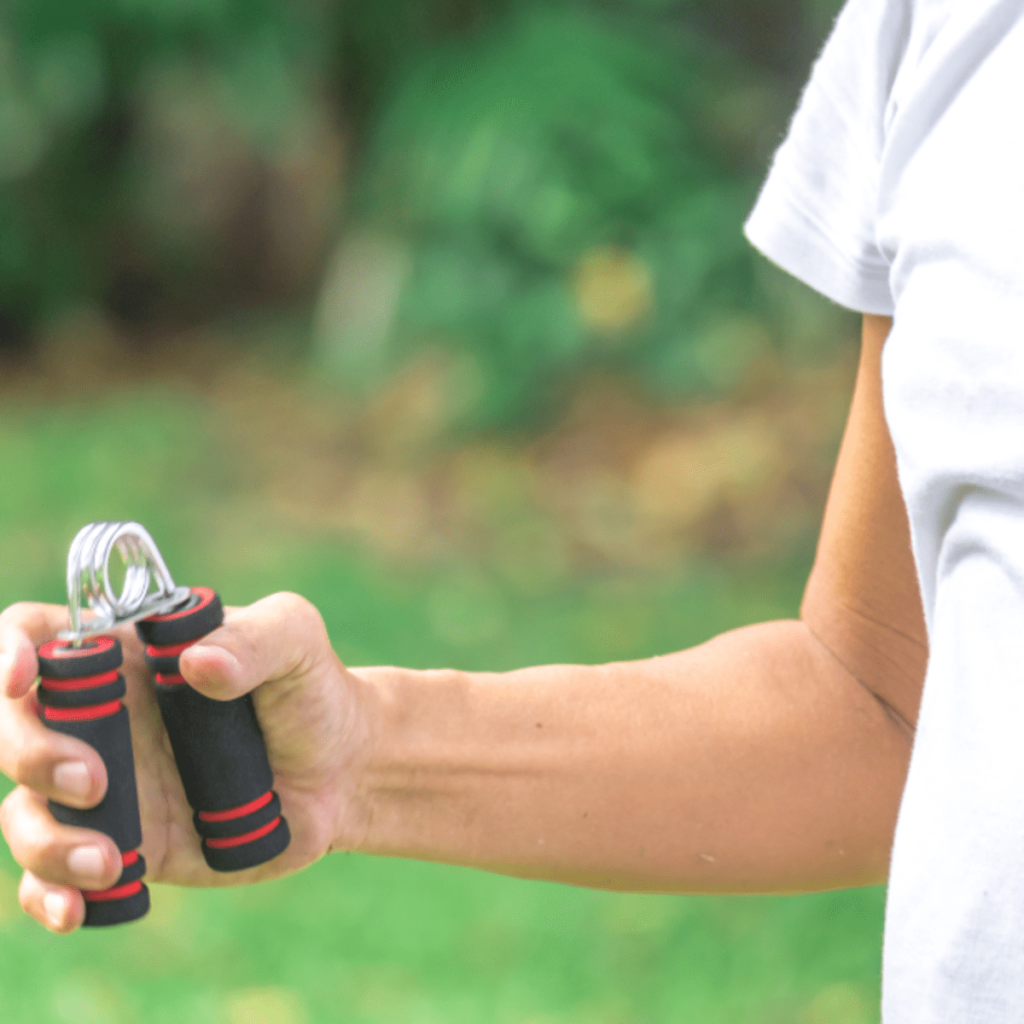
While using hand grippers to strengthen your forearms can have many benefits, overuse can lead to potential negative impacts.
Negative Impacts of Overusing Hand Grippers:
Muscle Fatigue and Strain: Overusing hand grippers without proper rest can lead to muscle fatigue and strain in the forearm muscles. These muscles, responsible for gripping and squeezing, can become overworked and develop discomfort or pain.
Tendonitis: Continuous and intense gripping exercises can strain the tendons in your forearm, potentially leading to tendonitis. This condition involves inflammation of the tendons and can cause pain, swelling, and reduced hand and wrist mobility.
Reduced Performance: Overtraining without appropriate recovery can actually diminish your performance. Muscles need time to repair and grow stronger, so neglecting this recovery phase can lead to decreased gains in grip strength.
Imbalance: Focusing solely on hand grippers for forearm and hand training can create an imbalance in your overall upper body strength. Neglecting other muscles in your arms and upper body may lead to uneven development.
Recommended Limits for Using Hand Grippers:
The maximum limit for using hand grippers can vary based on individual factors, including fitness level, recovery capacity, and specific goals. However, there are some general guidelines to consider:
Frequency: Aim for 2-4 hand gripper sessions per week. This allows for ample recovery time between workouts. Avoid using hand grippers intensely every day.
Intensity: Pay attention to the resistance level of your gripper. Start with a resistance level that is challenging but manageable, and gradually progress to higher resistance levels as your strength improves.
Duration: Each hand gripper session should typically last around 20-30 minutes. This timeframe allows for effective training without overtaxing your muscles.
Listen to Your Body: If you experience persistent pain, discomfort, or signs of overuse, such as reduced grip strength or mobility, it’s essential to reduce the frequency and intensity of your hand gripper exercises. Rest and allow your muscles to recover.
Include Variety: To prevent overuse and imbalances, complement hand gripper training with other forearm and upper body exercises, such as wrist curls, reverse curls, and forearm stretches.
In summary, while hand grippers can be valuable tools for strengthening your forearms and improving grip strength, it’s crucial to use them in moderation and with proper attention to recovery. Overuse can lead to negative impacts such as muscle strain and tendonitis, so adhering to recommended limits and listening to your body are key to safe and effective hand gripper training.
FAQs
Can a 14-year-old use hand grippers?
Yes, a 14-year-old can use hand grippers, but it’s important for them to choose an appropriate resistance level to avoid overexertion. It’s advisable to start with lower-resistance grippers and gradually progress as strength develops.
What is a good grip weight?
A good grip weight varies from person to person depending on their fitness level and goals. It’s best to select a gripper with resistance that is challenging but manageable for your current strength. You can gradually increase the weight as your grip strength improves.
What is the strongest grip form?
The strongest grip form varies among individuals and depends on their specific training goals. Common grip forms include the crush grip (closing the hand), pinch grip (holding objects between the fingers and thumb), and support grip (sustaining a hold over time). The choice of form depends on your training objectives.
Do grippers increase veins?
Regular hand gripper exercises can promote better blood circulation in the hands and forearms, which may result in more pronounced veins over time. However, the extent to which grippers increase vein visibility varies from person to person.
Is it OK to use hand grippers every day?
Using hand grippers every day may lead to overuse injuries and muscle fatigue. It’s generally recommended to have 2-4 sessions per week with rest days in between to allow for muscle recovery and prevent strain.
Do hand grips affect height?
Hand grippers primarily target hand and forearm muscles and do not have a direct impact on a person’s height. Height is primarily determined by genetics and growth during adolescence.
Final words:
In conclusion, these handy devices primarily excel at strengthening grip and forearm muscles. While they play a vital role in enhancing hand and forearm strength, they aren’t a magic solution for significantly increasing wrist size. Genetics and bone structure remain significant factors in determining wrist size.
So, it’s essential to view hand grippers as valuable tools for specific fitness goals, such as enhancing grip strength and overall hand and forearm fitness. Remember, consistency, proper technique, and balanced training are keys to achieving your fitness objectives. While hand grippers may not give you Hulk-sized wrists, they can undoubtedly contribute to a stronger and more capable set of hands and forearms.





